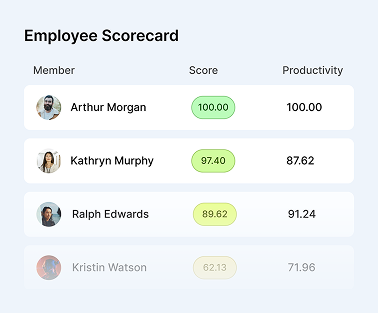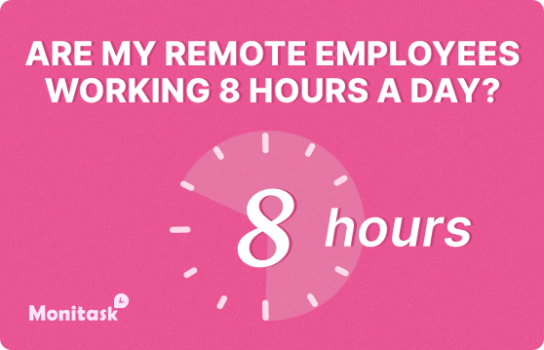Challenges of Flextime Manager and How to Overcome Them

Do you want to avoid being stuck in the office from 9 to 5 daily?
Flextime might be the thing you need! With flextime, you can adjust and customize your work hours to fit your schedule, giving you more freedom and a better work-life balance.
But, with great flexibility comes great responsibility, and that’s where the challenges of flextime management come in. Don’t worry. We’ve got you covered.
In this article, we’ll explore the hurdles of flextime management and give you some tips on overcoming them.
Trust us, reading this will be worth your time – we guarantee it’ll be more fun than a boring meeting!

What are flextime and its benefits?
Wellbeing Works
Are you a manager or executive looking for a way to keep your employees engaged and productive? If so, consider implementing flextime into your workplace. Flextime is an increasingly popular trend allowing employees to work outside the “traditional” 9-5 work hours.
What is Flextime?
Flextime is a flexible arrangement allowing employees to work outside the traditional 9-5 timeframe.
With an app, flextime, employees can begin their day earlier or later than usual, take longer breaks, or work from home if needed. Flextime aims to give workers more control over their schedules and allow them to create a better work-life balance.
The role of a flextime manager

In today’s modern business world, flextime managers are increasingly important. As the pressures to achieve greater productivity and cost savings continue, many companies realize that a flexible approach to managing staff can benefit employees and employers.
While managing a team of employees with different schedules may seem daunting, the rewards far outweigh the challenges.
So what exactly does a flextime manager do?
In short, their job is to manage teams of people who work flexibly—they have freedom over when and where they complete tasks or projects. This means that the flextime manager must be organized and efficient to keep track of everyone’s progress. They should ensure that tasks are delivered on time.
Flextime managers must also be adept at problem-solving and conflict resolution to handle any issues arising from different schedules or locations effectively.
The flextime manager should also advocate for their team members—encouraging them when needed and helping them find resources.
How Flextime Managers Facilitate Productivity
Flextime managers have unique responsibilities compared to traditional supervisors or team leads. They must effectively manage people who work different shifts without compromising overall performance or efficiency.
This feat requires strong communication skills and an understanding of how different personalities interact with each other in various contexts. They must also be able to effectively schedule tasks across teams while ensuring that projects deliver on time despite conflicting schedules between workers.
Finally, they must ensure that everyone is aware of their duties at any given moment while still motivating them towards success—and all within the constraints of organizational policies and procedures set forth by upper management.
Five Qualities of a Great Flextime Manager

For those unfamiliar with flextime, it is an arrangement in which employees work outside traditional work hours and from alternate locations.
It is becoming increasingly popular with employers due to its many benefits, including increased productivity and access to a wider talent pool. With that said, having an effective flextime manager is essential for any successful flextime program. Here are five qualities of a good flextime manager.
#1 Communication Skills
A good flextime manager must have strong communication skills. They must effectively communicate expectations and deadlines to their team while being available and responsive when questions or concerns arise.
Strong communication requires the ability to convey information clearly without misunderstanding and patience when dealing with employees who may not understand the guidelines or processes related to the flextime program.
#2 Organizational Skills
Flexible schedules can be challenging for managers lacking organizational skills because they must ensure that all tasks deliver on time.
Good flextime managers should be highly organized individuals who can easily keep track of everyone’s assignments.
#3 Time Management Skills
As mentioned, managing a flexible schedule requires good time management and organizational skills. A good flextime manager must be able to consider everyone’s availability and assign tasks accordingly for the team to meet its goals promptly.
Furthermore, they should be able to quickly adapt if unexpected changes occur due to unforeseen circumstances, such as illness or personal matters requiring employees’ attention during work hours.
#4 Empathy
A great flextime manager will empathize with their employees – understanding their individual needs and challenges – while maintaining expectations around performance standards.
This quality is crucial during times of crisis when employees may require additional flexibility due to personal situations, such as caring for sick family members or other commitments outside of work that require more time than usual.
Having empathy allows managers to be understanding while still meeting business objectives at the same time.
#5 Trustworthiness
Trustworthiness is essential for any successful flextime program. It makes employees feel secure knowing their manager will honor their commitments even when they are not physically present in the office or working standard hours like everyone else on the team.
Trustworthiness also helps foster an environment where people feel comfortable expressing ideas and actions without fear of judgment or retribution.
Flextime managers will be dealing with sensitive information from their team members regarding personal matters or private projects that may require extra security measures on top of regular company protocol. With this in mind, it’s important for managers dealing with sensitive information from their teams to have high levels of integrity when handling confidential data or discussing personal matters outside of work hours or when others may not be present online or in the office.
Tips for Being an Effective Flextime Manager

So, how do you manage an effective, flexible workforce? Let’s look at some tips to help you adjust to this new normal.
Establish Clear Guidelines and Expectations
Creating clear guidelines and expectations is the key to managing a flexible workforce. It’s essential to define each team member’s roles and set deadlines they must meet.
Guidelines and clear roles will ensure that everyone on the team has the same goals regarding tasks, timelines, and deliverables. It’s also essential to provide feedback regularly so everyone knows what’s expected of them.
Create a Culture of Trust and Respect
Another important factor in managing a flexible workforce is creating a culture of trust and respect. When employees feel supported by their managers, they are more likely to be productive and motivated.
Encourage your team members to ask questions if they need clarification on assignments or project details, express concerns about any issues they may face while working remotely or during non-traditional hours, or offer suggestions for improvement or change if needed.
You should also hold regular one-on-one meetings with each team member to monitor progress and provide guidance as needed.
Foster Collaboration and Communication
When managing a remote or flexible workforce, you must foster collaboration between team members through regular communication channels like email, chat apps, or video conferencing software.
Collaboration keeps everyone informed about ongoing projects and allows them to share ideas in real-time without being in the same place.
Regular check-ins can also help build relationships between co-workers, which helps keep morale high even when people can’t spend time together in person as often as before due to their different schedules or locations.
Provide Support and Resources for Remote Workers
Finally, you must support your remote workers by ensuring they have access to the resources they need, such as reliable internet connection, technical assistance if needed for any software issues that arise while working from home or away from the office, Etc.
Additionally, offering flexibility with work hours where possible can further increase productivity among your staff since it gives them more autonomy.
Utilize Technology for Enhanced Productivity
Flextime managers should use leading technological advancements to ensure their flex periods are as effective and productive as possible.
As flex time offers employees a variety of work and leisure activities, technological tools can manage multiple tasks, automate processes, and store company data securely.
Utilizing the right technology for flex activities can help flex managers better focus on what matters and significantly improve organizational efficiency.
Furthermore, providing the necessary training and guidelines on using digital tools is beneficial when it comes to flex scheduling; It will enable managers to help teams become more comfortable with available technology to achieve high-performing results.
Benefits of Flextime for Employees and Employers

Flextime can also significantly impact employers, from increased productivity and efficiency to cost savings. Flextime offers numerous benefits for both employer and employee.
Increased Productivity & Efficiency
Studies have shown that employees allowed to set their hours often exhibit higher levels of engagement, leading to improved productivity and efficiency.
That’s because when employees feel they have control over their work schedule, they are more likely to be motivated and productive.
Furthermore, studies suggest that allowing employees to work remotely or from home can lead to even greater gains in productivity due to fewer distractions from colleagues.
Improved Work-life Balance & Reduced Stress
Flextime allows employees to manage their time more effectively, improving work-life balance and reducing stress.
This is especially beneficial for parents or caregivers who need time off during the school day for family obligations or personal errands.
By allowing them the flexibility to come to work later or leave earlier, employers can help reduce absenteeism related to caregiving responsibilities while increasing employee job satisfaction.
Reduced Absenteeism & Turnover Rates
Employees who enjoy greater scheduling flexibility tend to be more engaged with their jobs, resulting in lower absenteeism and reduced turnover rates. Additionally, offering flextime helps create a sense of loyalty among employees as they feel appreciated by their employers for being allowed this privilege.
This leads to higher morale among staff members, further reducing absenteeism and turnover rates while boosting overall performance levels across the organization.
Attracting & Retaining Top Talent
In today’s competitive job market, having access to flexible working arrangements is becoming an increasingly important factor in attracting top talent—especially among younger generations, such as millennials, who value autonomy and freedom when managing their time.
By offering flexible schedules as part of your recruitment package, you can make your company stand out from other potential employers while helping you attract highly qualified individuals who may otherwise not consider applying for jobs with your organization.
Cost Savings for Employers
Flextime has resulted in cost savings for employers due not only to decreased absenteeism but also by reducing office space needs. You don’t need space if some staff opt for remote working arrangements or split shifts between two locations instead of one central office location.
Additionally, organizations can save money on transportation costs if staff members telecommute instead of having everyone commute daily into one central office space location each day.
5 Common Challenges of Flextime Management (and How to Overcome Them)

Flextime is a popular workplace perk that gives employees more control over their workday. While this arrangement can improve productivity and morale, it can also present some challenges for managers.
1. Lack of Oversight and Monitoring
One of the most common challenges of flextime is the lack of oversight and monitoring. When employees are not working in a traditional 9-to-5 setting, it can be challenging to know who is working when and on what tasks.
Lack of monitoring can lead to missed deadlines, unproductive days, and other problems. To overcome this challenge, consider using project management software like Asana or Trello to create transparency and accountability among your team.
You can also hold regular check-in meetings (via video conference or in person) to ensure everyone is on track with their projects.
2. Difficulty in Ensuring Fairness and Equity
Another challenge of flextime is ensuring that all employees are treated fairly and given the same opportunities for development and advancement.
For example, if one employee can take advantage of flextime by leaving early every day to pick up their kids from school, another employee who doesn’t have children may feel at a disadvantage.
To overcome this challenge, you must be clear about your expectations for all employees, regardless of their circumstances. You should also ensure you provide the same development opportunities to all employees (e.g., access to training courses, mentorship programs, Etc.).
3. Maintaining Company Culture and Cohesion
When employees are not working side-by-side in an office, it can be challenging to maintain company culture and cohesion. This is because there are fewer informal interactions and bonding opportunities among coworkers.
To overcome this challenge, make sure you’re intentional about creating opportunities for social interactions among your team (e.g., happy hours, team building exercises, Etc.).
You can also use technology to your advantage via video conferencing software for regular check-ins and team meetings. The video conference will help everyone stay connected and engaged with the company culture.
4. Addressing Communication Barriers
Another common challenge of flextime is addressing communication barriers that can arise when employees work in different locations or simultaneously.
For example, communicating about ongoing projects or tasks may be difficult if an employee works from home while another employee is out sick.
To overcome this challenge, use communication tools that allow easy collaboration among team members (e.g., Slack, Google Docs, Zoom). You should also consider holding regular check-ins (via video conference or in person), so everyone is on the same page about upcoming deadlines or deliverables.
5. Balancing Flexibility with Business Needs
Working from multiple locations and managing various activities can be challenging and an opportunity. With the rise of remote work, businesses must consider the balance between work flexibility and business needs to sustain their commitment to employee health and safety.
Achieving this balance requires creative solutions such as flexible working hours, a clear decision-making context, and incentivizing productivity.
The key element in ensuring success is ensuring everyone understands their role and responsibilities and is fully aware of businesses’ expectations for achieving results when needing multiple outputs from multiple people.
Conclusion: Manage Flextime Effectively
Flextime management is an important tool for employers and managers to ensure effective productivity and work-life balance. For employers, implementing flextime policies can be incredibly beneficial in both saving money and attracting talent.
For managers, understanding how to manage flextime effectively can be instrumental in managing workflows and increasing their overall effectiveness.
As a call to action for any workplace with employees on a flexible schedule, we recommend consistently encouraging employee attendance throughout the week, whether through days off or remote working arrangements.
Companies should prioritize setting an agreed-upon minimum number of hours spent in the office weekly. It ensures that set tasks or goals gain maximum productivity and efficiency.
If businesses discard the traditional concept of working full-time hours and allow their employees to achieve better results – when it’s most convenient for them – then the entire organization will reap the benefits of good flextime management.
– The Monitask Team



